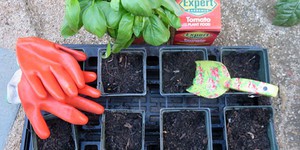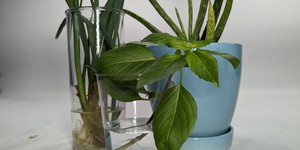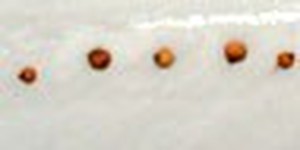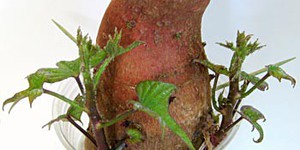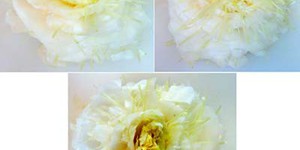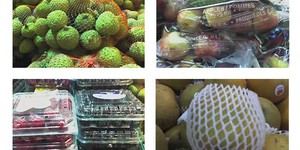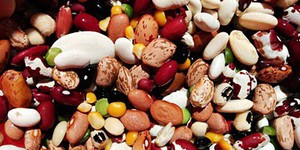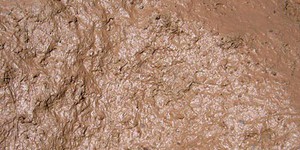Zero Hunger, Third Grade Science Projects (12 results)
The United Nations Sustainable Development Goals (UNSDGs) are a blueprint to achieve a better and more sustainable future for all.
These projects explore topics key to Zero Hunger: End hunger, achieve food security and improved nutrition and promote sustainable agriculture.
These projects explore topics key to Zero Hunger: End hunger, achieve food security and improved nutrition and promote sustainable agriculture.
Science Buddies' third grade science projects are the perfect way for third grade students to have fun exploring science, technology, engineering, and math (STEM). Our third grade projects are written and tested by scientists and are specifically created for use by students in the third grade. Students can choose to follow the science experiment as written or put their own spin on the project.
For a personalized list of science projects, third graders can use the Science Buddies Topic Selection Wizard. The wizard asks students to respond to a series of simple statements and then uses their answers to recommend age-appropriate projects that fit their interests.
Let us help you find a science project that fits your interests, with our Topic Selection Wizard.|
Select a resource
Coding Projects
Sort by
|
What do plants need to grow? Most of us would answer that they need light, air, water, and soil. But by using a process called hydroponics, you can grow plants without soil! How does it work? Try this project and see for yourself!
Read more
Plants need nitrogen to grow healthy stems and leaves. Although nitrogen is the most abundant element in the air we breathe, that form of nitrogen cannot be used by plants. Nitrogen contained in fertilizer, on the other hand, is readily taken up by plants. In this experiment, you will compare plants grown without nitrogen fertilizer to plants grown with nitrogen fertilizer.
Read more
New
Have you ever seen a waiter balance an entire tray of drinks without spilling any? How do they do it? Do you think you could build a robot waiter that can do the same thing? In this project, you will learn how to build a self-balancing robotic tray. You can incorporate the auto-leveling tray into one of our many other robotics projects, like the Bluebot or robotic arm.
Read more
Have you ever picked a flower and tried to make it stay alive in a cup of water? How long does that last? Do some flowers last longer than others? Why do you think that is? In this experiment, you will compare different plants to see which ones can regrow or regenerate after damage and learn why some plants are better at it than others.
Read more
We all know that plants need sunlight and water to grow big and tall. But did you know that inside seeds are baby plants, and that the fragile baby plant inside the seed needs to be protected? If you've ever had a sunburn, you also know that the sun gives off harmful radiation and heat. How much radiation and heat can a seed handle? Find out using some radish seeds, an oven, and your microwave!
Read more
Have you ever enjoyed eating a tasty sweet potato? They can be served as yummy mashed sweet potatoes with melted butter, turned into golden-brown sweet potato fries, or prepared in many other scrumptious ways. Did you know that you can make a sweet potato grow into a sweet potato plant, and grow several sweet potatoes this way? In this science project, you will grow your own sweet potato plants and investigate what part of the sweet potatoes is needed to grow the plants.
Read more
New
Have you ever walked next to your favorite ocean, lake, or creek and seen plastic waste everywhere? Have you ever thought about how much plastic breaks down into microplastics and pollutes waterways? Scientists are coming up with new ways to remove these microplastics from our waterways, and now you can test them out for yourself at home.
Read more
Do you like to watch outdated science fiction and cheesy horror movies? Many fictional tales of cloned organisms have been created based upon the scientific method for cloning animals or plants. In the real world, the cloning of plants is a common method used in modern farming. How do you clone a plant?
In this science project you will get to find out by making your own cabbage clones!
Read more
Fruit is a strategy some plants use to attract animals to disperse seeds. The animals eat the fruit and disperse the seeds through the digestive system. To attract animals, fruit needs to ripen and develop an odor that acts as an attractant. How much more successful are ripe fruits at attracting animals? Try setting out an over and under ripe piece of fruit, and compare how many many insects are attracted to each fruit. How does ripening occur? You can do an experiment using a very ripe…
Read more
Why do different types of fruits come packaged in different ways? In this project, you will experiment with different ways of packaging fruit to see if it has an effect on the freshness of the fruit. Will a different kind of packaging allow the fruit to stay fresh longer?
Read more
Dried beans are a major ingredient in dishes served all over the world. In their dried form, they can be stored for years and then "brought back to life" by soaking them in water. In this cooking and food science fair project, you will measure just how much water is absorbed by beans when they rehydrate (soak up water). Can such a little bean really hold that much water?
Read more
Have you ever taken a step onto what appeared to be dry ground, only to find yourself ankle-deep in mud? Yuck! When you walk through damp soil, it can be a very messy experience. How can you tell if soil is wet or dry before you step on it? In this science project, you will investigate whether the color of the soil can help you determine how dry or wet it is.
Read more
|



